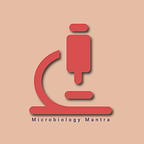Biography of Louis Pasteur
Louis Pasteur, a name synonymous with revolutionary contributions to microbiology, stands out in microbiology history. From his groundbreaking work on germ theory to the development of vaccines, Pasteur’s impact on the field of microbiology is remembered through time. There are many scientists who have contributed a lot to society. However, the contributions of Louis Pasteur to the medical field were something unique that people can never forget. Pasteur was one of those scientists, who had dedicated his life to the medical field. The contributions of Pasteur to the medical field have saved millions of people on this planet.
Childhood and Family Background
Pasteur was born on 27th December 1822 in a small town called Dole in France. He was born into a poor family. His father Jean-Joseph Pasteur was a tanner, who makes animal skin into leather. He was homesick and could not concentrate on his studies during the early stages of his school days. Later he began to pay more attention to his studies. Despite facing financial constraints, his family recognized and nurtured his intellectual curiosity from an early age. Young Louis demonstrated a keen interest in drawing and painting, but it was his curiosity about the natural world that set the stage for his future scientific endeavors.
In 1842, he received his bachelor’s degree in science from the Royal College of Besancon. Then, he was appointed as professor of chemistry at the University of Strasbourg in 1848. Later, he became the Head of the Chemistry department. For the science of biochirality, the first milestone was the discovery of molecular chirality by Louis Pasteur in 1848.
Working on Fermentation
In 1854, Pasteur was appointed as dean and professor of chemistry at the Faculty of Sciences in Lille, France. Then he worked on the problems associated with the manufacturing of beer and wine.
In 1857, Pasteur returned to Paris to join as Director of the Scientific Department in École Normale and worked on fermentation issues. In the same year, he demonstrated that living microorganisms are associated with the fermentation process. The further studies on fermentation led Pasteur to an unexpected discovery in 1861. He observed that the fermentation process can be arrested by introducing air (oxygen). This process is known today as the Pasteur Effect. He said that the microorganisms involved in the fermentation process can only live in the absence of oxygen. This led to his introduction of the terms aerobic and anaerobic to designate microorganisms based on the requirement of oxygen.
Pasteur not only discovered that microbes are involved in the fermentation of beer and wine, but he also discovered that microbes could contaminate them. The contamination issue of beer and wine was collapsing the fermentation industry in 1863. Pasteur was then asked to solve the issue by Napoleon III, the emperor of France. He studied the contamination of wine and found that microbes cause contamination. To prevent this, he heated the wine to less than 100°C, a process that is widely known today as Pasteurization. Today, Pasteurization is used to sterilize milk, beverages, and other foods.
Pasteur conducted experiments that disproved the Spontaneous generation theory.
Saving the Silk Industry
By the end of 1865, the silk industry in France was collapsed by a mysterious disease. Pasteur was then requested by the government of France to save the silk industry. He finally succeeded in identifying and isolating the disease-causing microorganism. He developed a method that enabled the preservation of healthy silkworm eggs to prevent contamination. Within a short time, this method was recognized and implemented in all the other countries that produce silk.
Entry into Vaccines
In 1879, Pasteur accidentally inoculated an old culture of “Chicken Cholera” (Pasteurella multocida) to a group of chickens. Unexpectedly, these chickens did not develop the signs of disease. Pasteur then asked his team to inoculate the chickens with freshly prepared culture, and they were surprised to see the results. These chickens did not develop any signs of disease and remained healthy. He observed that the culture had lost virulence due to prolonged storage. Then, he applied the same principle and developed vaccines for Anthrax and Rabies.
On July 6, 1885, Louis Pasteur and his colleagues injected the 14 daily doses of rabbit spinal cord suspensions containing progressively inactivated rabies virus into 9-year-old Joseph Meister, who had been severely bitten by a rabid dog. The boy never developed symptoms and Pasteur became an international hero. Later, many other bite victims throughout the world were subsequently saved by Pasteur’s vaccine, and the era of preventive medicine had begun. An international fund-raising campaign was launched to build the Pasteur Institute in Paris, the inauguration of which took place on November 14, 1888. Pasteur’s Institute is dedicated to the study of biology, microbes, diseases, and vaccines.
Awards
Pasteur died
The world lost him on 28th September 1895. His death was due to cardiac arrest. He was honored with a state funeral. His remains were transferred to a permanent crypt in the Pasteur Institute, in Paris.
Personal life
In 1849 he married Marie Laurent, the daughter of the rector of the University of Strasbourg, where Pasteur was a professor of chemistry. They had five children together, but only two of them survived to adulthood, and the rest three of them died of Typhoid. This made him study infectious diseases. Pasteur had a strong faith in God.
